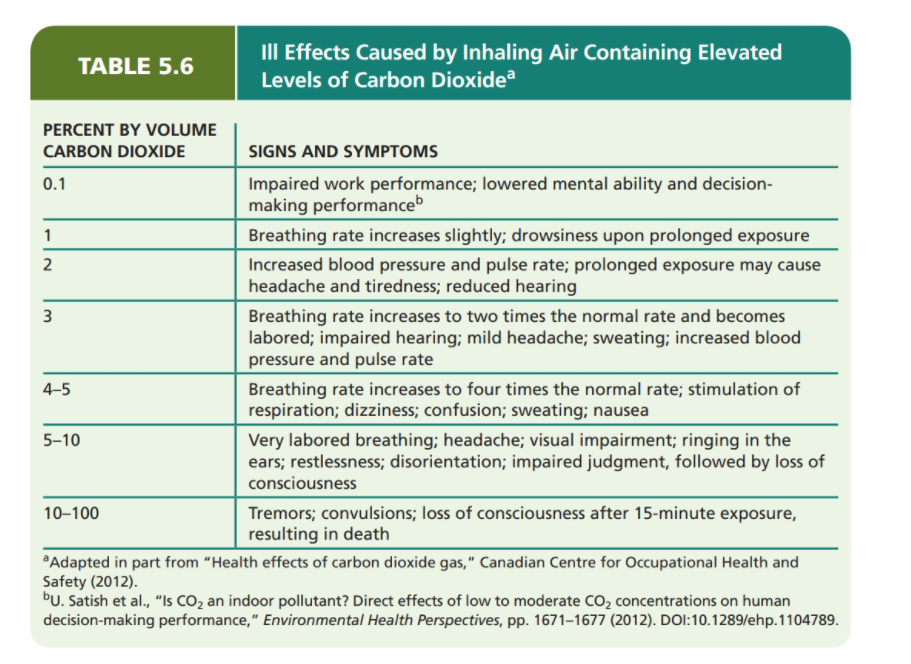The OSHA regulation at 29 C.F.R. §1910.162(b)(5) requires employers to provide a predischarge-employee alarm system to alert employees if a carbon dioxide concen-tration of 4% or greater is released from a fixed extinguishing system in a workplace. What is the most likely reason OSHA enacted this regulation?
Chemistry of Fire Extinguishing Agents: Review and answer the below scenerios.
a. The OSHA regulation at 29 C.F.R. §1910.162(b)(5) requires employers to provide a predischarge-employee alarm system to alert employees if a carbon dioxide concen-tration of 4% or greater is released from a fixed extinguishing system in a workplace. What is the most likely reason OSHA enacted this regulation?
b. At 14 C.F.R. §121.265, FAA allows carbon dioxide to be used as a fire extinguish-ing agent onboard aircraft, provided that provisions are made to prevent harmful concentrations from entering any personnel compartment. Use Table 5.6 to deter-mine whether adverse health effects are likely to be experienced by a crew member who is confined to a compartment in which the air contains 8, carbon dioxide.
c. The chemical formula of methyl bromide is CH3Br. Why does methyl bromide per-form effectively as a fire extinguishing agent?
d. A potential risk of inhalation toxicity may occur to individuals that are exposed to the thermal decomposition products of Halon 1301 and Halon 1211. What specific thermal decomposition product causes this health hazard?

effects of elevated concentrations of carbon dioxide of human health
Trending now
This is a popular solution!
Step by step
Solved in 2 steps









